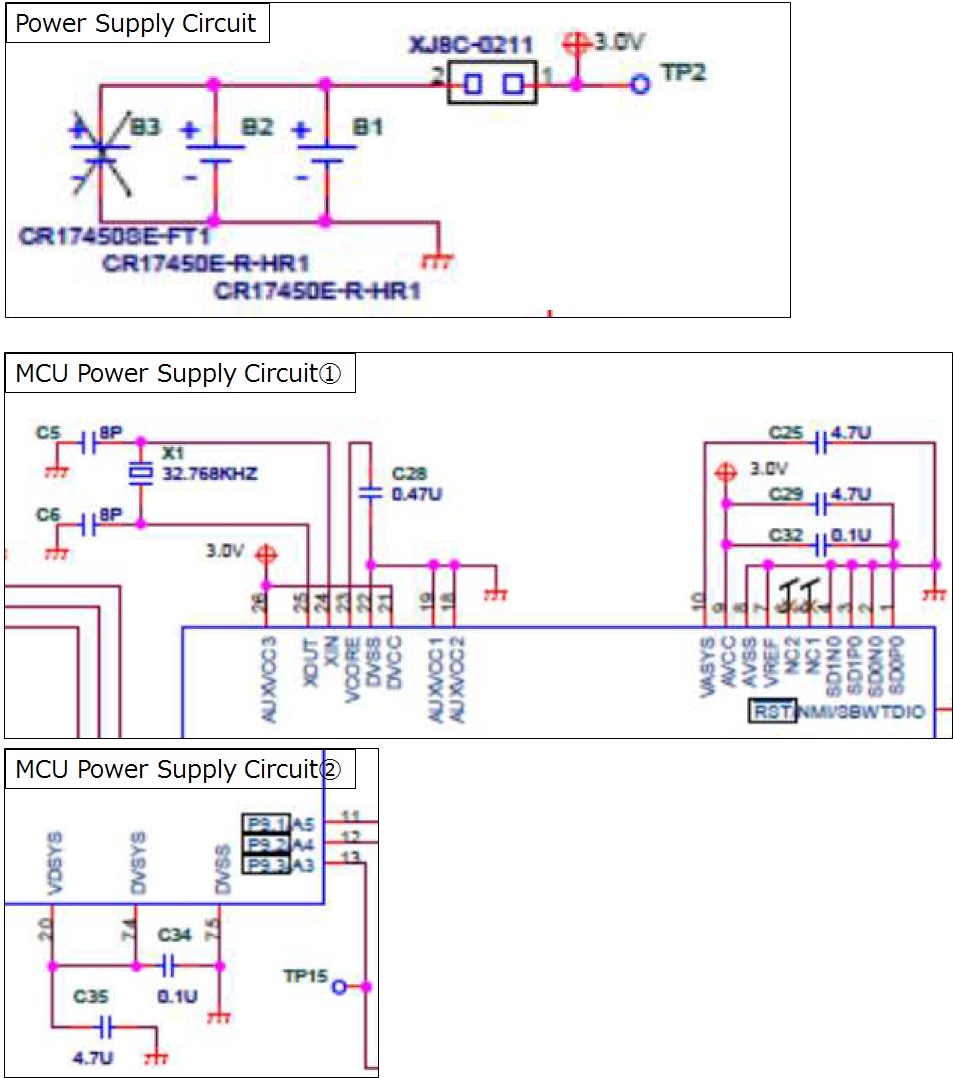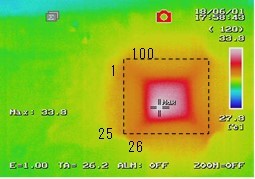Other Parts Discussed in Thread: MSP430WARE, MSP-TS430PZ100B
Hi community member,
There was a phenomenon that the consumption current of MSP430F6726 was too high on my customer's board.
Looking at the thermography of the board, only the microcomputer had a fever.
So I guess that we are consuming electricity with the microcomputer.
However, I am in trouble because I do not know the cause.
Could you give me some advice?
◆ Phenomenon Environment
Phenomenon board: customer board
Consumption current: 13 mA to 50 mA max
Theoretical consumption current of board: 15uA
◆ Unused pin processing
All unused pins are set to Low output setting (PxDIR.y = 1, PxOUT.y = 0)
◆ Symptom situation
The microcomputer's operation was normal even on boards with high current consumption.
If reset input is made to the reset terminal, consumption current may become about 15 uA.
Consumption current is high right after power on.
Especially this phenomenon is easy to occur if it is a new battery.
◆ Circuit diagram
The circuit diagram around the power supply is as follows:
Batteries are connected directly to microcontroller, peripheral circuit Vcc.
battery:Cell Type CR17335E-R
◆ Thermography image
Best regards.
Cruijff



